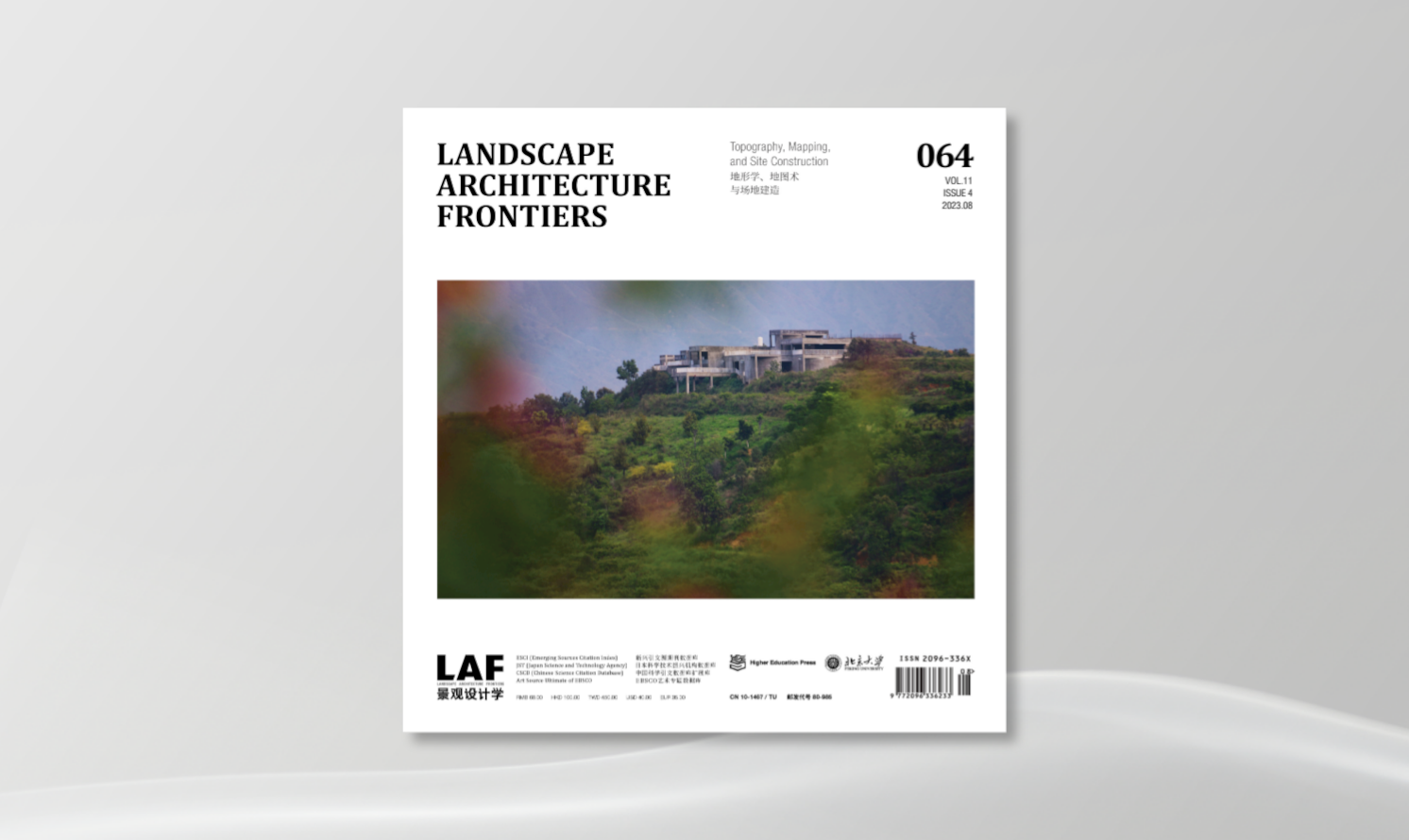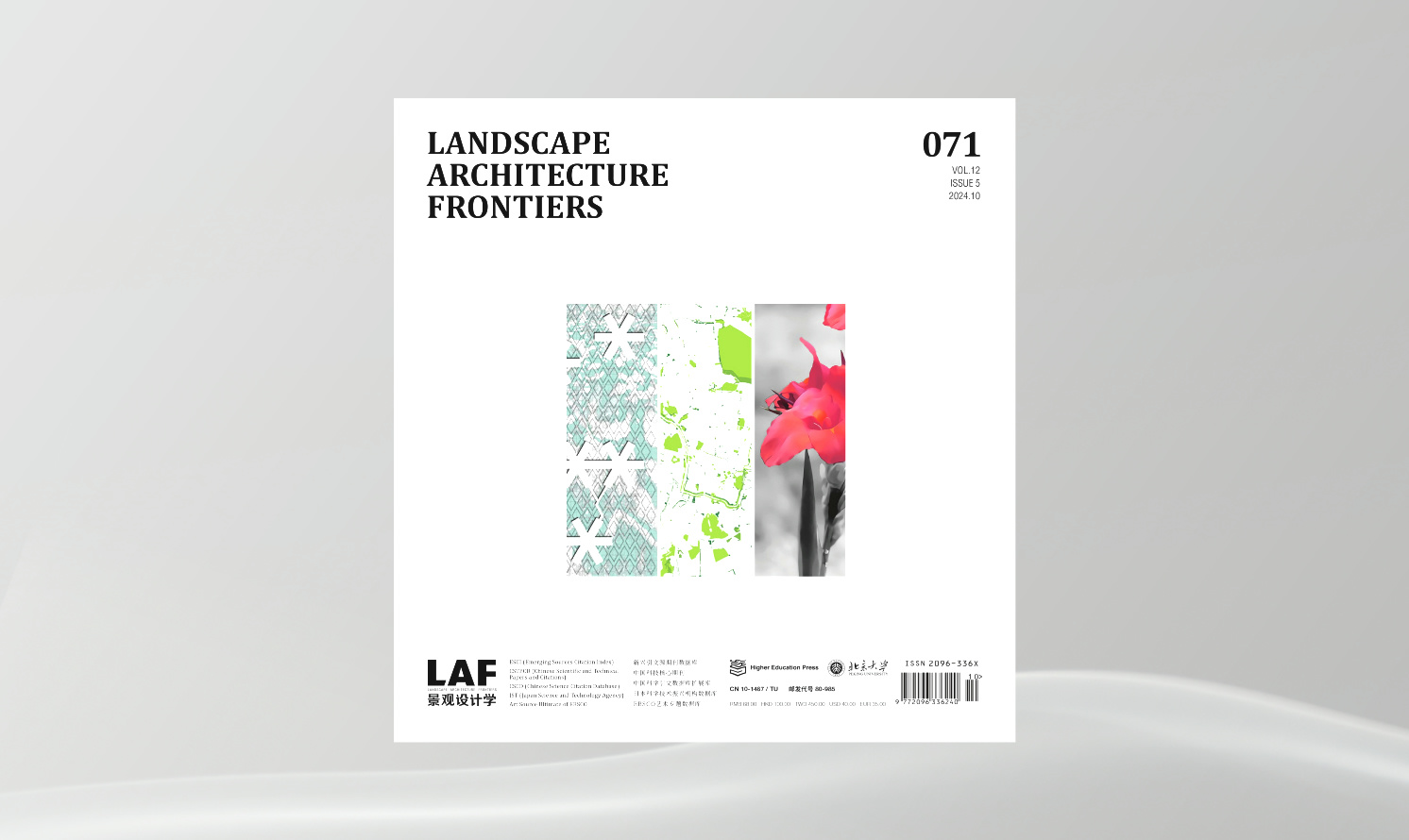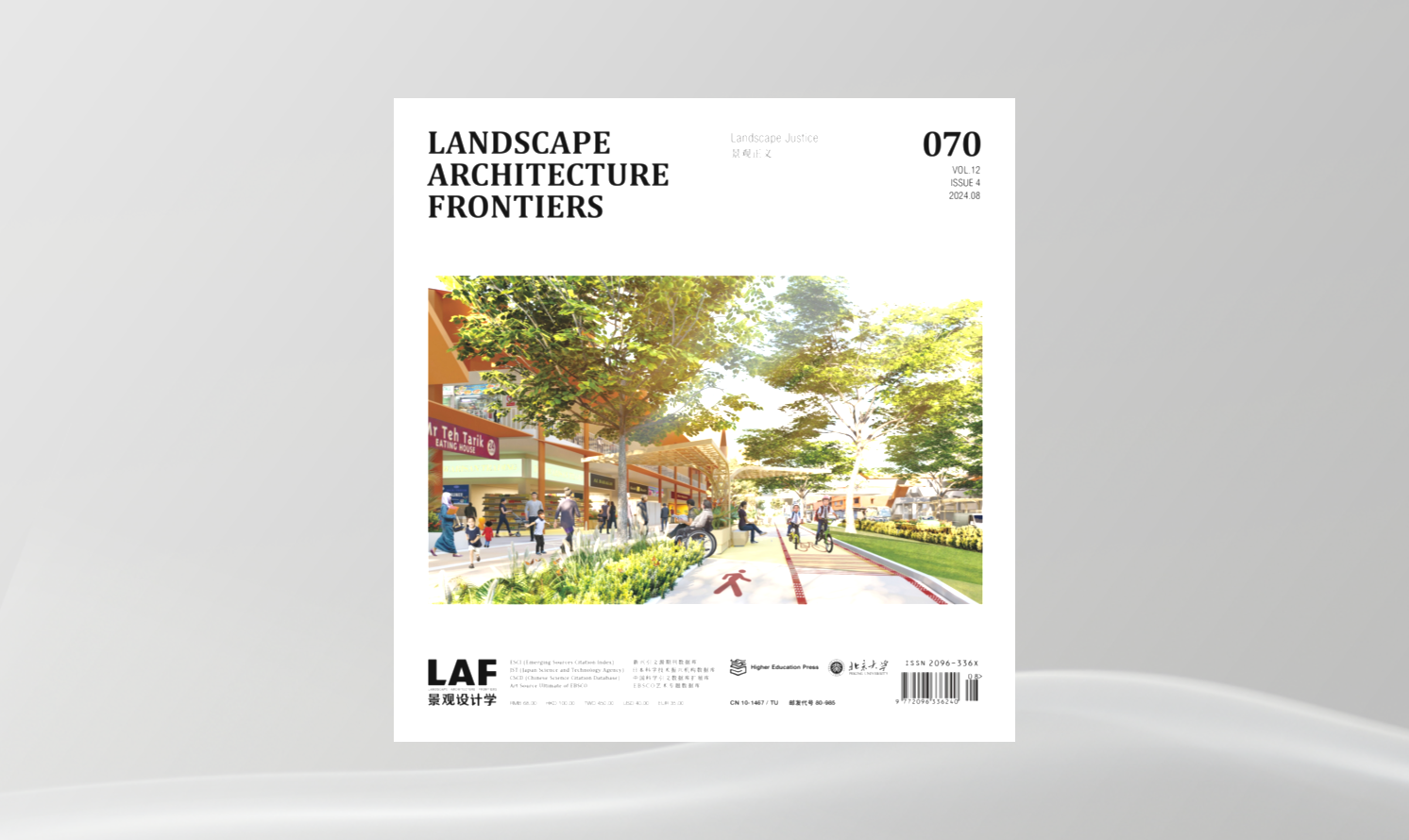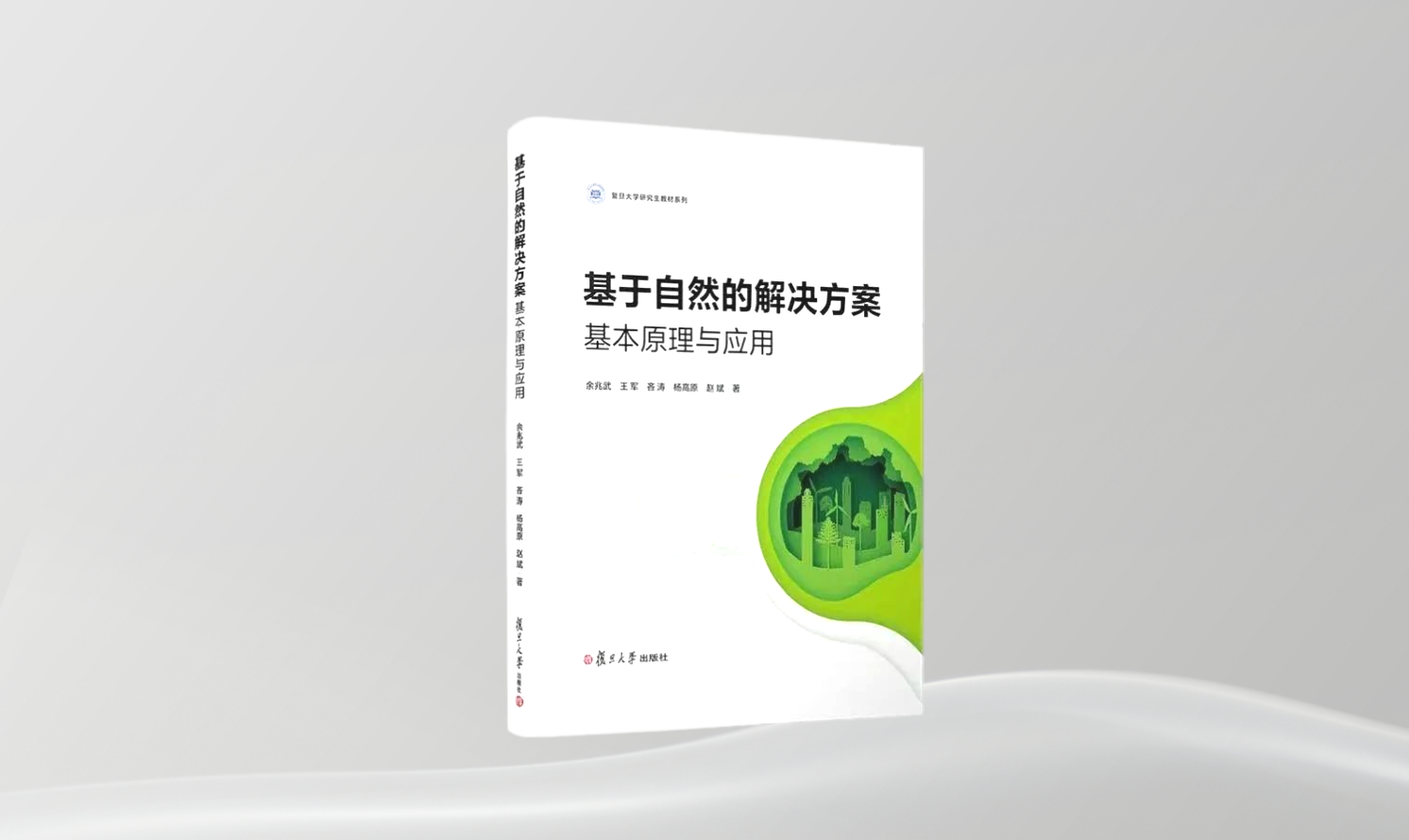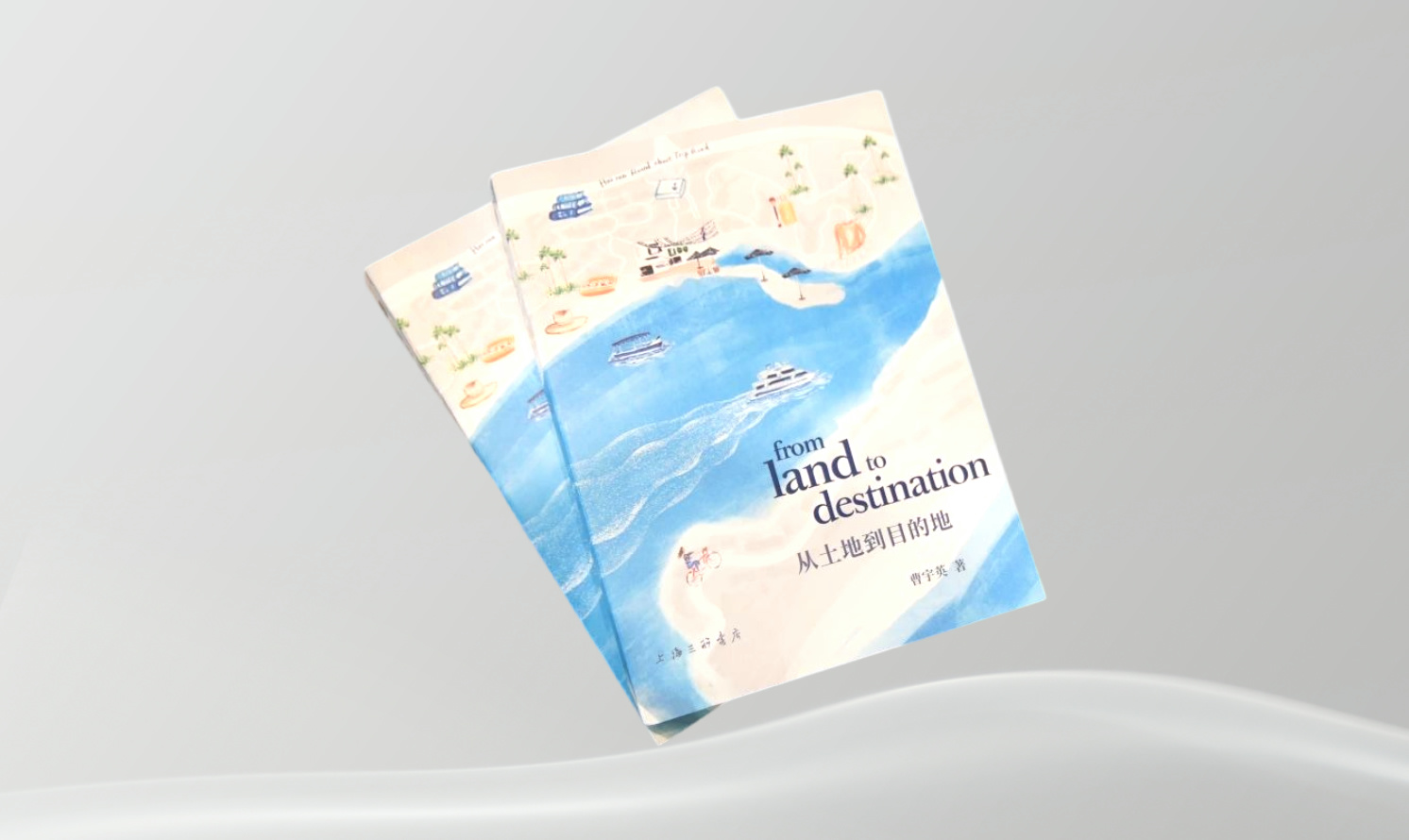湄公河和西貢內(nèi)河三角洲的抵抗力、韌性��、水文環(huán)境及動(dòng)態(tài)變化的地形學(xué)研究
Topographies of Resistance, Resilience, Bathymetrical Realities, and Dynamics of the Mekong and Sài Gòn-??ng Nai Deltas
作者:布魯諾·德·繆爾德���,凱利·香農(nóng) Bruno De MEULDER, Kelly SHANNON
摘要
湄公河三角洲和西貢內(nèi)河三角洲與大多數(shù)三角洲一樣�,通常被認(rèn)為是一個(gè)廣闊�、相對(duì)平坦的動(dòng)態(tài)水域��,其特點(diǎn)是水體形態(tài)豐富多樣�����,生物棲息地眾多��。在這種過于簡化的理解之下���,古代和現(xiàn)代工程學(xué)為了在人造生產(chǎn)性和保護(hù)性景觀中建設(shè)抽象意義上的有序而靜態(tài)的景觀結(jié)構(gòu)��,將整個(gè)交錯(cuò)群落區(qū)徹底轉(zhuǎn)變?yōu)楦蓾穹置鞯膮^(qū)域�,海拔和水濕條件的流動(dòng)梯度也逐漸被固定的海拔高度所取代。大規(guī)模攫取式的單一耕作在帶來巨大收獲的同時(shí)��,也造成了生態(tài)和生物多樣性的喪失��,而且這種喪失在很大程度上是無法修復(fù)的�����。本文批判性地揭示了三角洲的歷史發(fā)展與其順勢(shì)地形之間的關(guān)系:如何利用地形來制定生產(chǎn)景觀�、居住環(huán)境和基礎(chǔ)設(shè)施的發(fā)展規(guī)劃,以及如何將地形與宇宙世界觀和領(lǐng)土地緣政治聯(lián)系起來��。通過案例研究�,本文揭示了本土知識(shí)體系及實(shí)踐利用地形改造所進(jìn)行的特定社會(huì)文化再生產(chǎn)。通常而言��,邊緣地區(qū)的大量當(dāng)?shù)貙?shí)踐要么逃脫了無情的“現(xiàn)代化”進(jìn)程��,要么在當(dāng)?shù)剡m應(yīng)和/或巧妙地顛覆了強(qiáng)加的超秩序��,體現(xiàn)了(對(duì)人類顛覆力和大自然地質(zhì)力)強(qiáng)大的抵抗力和韌性�。這些土地管理實(shí)踐案例的侵?jǐn)_性和控制性各不相同,但都強(qiáng)調(diào)了三角洲仍然是一個(gè)在文化�����、宗教和生產(chǎn)上都因地形變化而產(chǎn)生微妙變化的地區(qū)。同時(shí)�����,三角洲的自然地貌和地形顯然具有不斷變化的內(nèi)在特性——這既是一種天然的資產(chǎn)�,也是一種脆弱的劣勢(shì)。
關(guān)鍵詞
微地形��;沼澤�����;淤泥�����;水濕情況�����;越南�;柬埔寨�����;湄公河和西貢內(nèi)河三角洲;抵抗力�����;韌性
Abstract
The Mekong Delta (across Cambodia and Vietnam) and the Sài Gòn-??ng Nai Delta (where Ho Chi Minh City is embedded), like most deltas, are typically considered a vast, relatively flat water-dominated and dynamic territory characterized by always evolving variations of wetness, multiplying by that multitudes of biotopes. Ancient and modern engineering developed with this overly simplified preconception and subsequently radically transformed the entire ecotones into sharp and categorical distinctions of wet and dry, primarily to create productive and protective landscapes for humankind within abstractly ordered and static landscape structures. Fluid gradients in elevation and humidity were systematically replaced by fixed elevations. Extractive monocultures on massive scales resulted simultaneously in gigantic harvests but also the loss of ecology and biodiversity that is largely irrecoverable. The paper critically unravels the historical development of the deltas in relation to their homeopathic topography: how its manipulation framed development agendas—of productive landscapes, of settlement, and of infrastructure—and was linked to both cosmological worldviews and territorial geo-politics. The micro-topographies of the deltas were significantly altered by the mighty Khmer Empire and Nguy?n Dynasty and since the 19th century by French and American occupiers and subsequently by Cambodians and Vietnamese projects. The paper utilizes several case studies to reveal that IKSP (indigenous knowledge systems and practices) have harnessed topographical manipulation for context-specific socio-cultural reproduction. A host of local practices, often in peripheral geographies, has either escaped the relentless “modernization” process or locally adapted to and/or intelligently subverted the imposed supra-order. There is a strong resistance and resilience (subversive by humans and geological by the forces of nature including sea level rise and subsidence) to imposed topographical manipulation. The cases, arranged from the least to the most intrusive and controlling land management practices, underscore that the deltas remain a territory that is culturally, religiously, and productively nuanced by topographical transformation. At the same time, there is clearly an innate, ever-changing nature of deltaic physiography and topography, which is simultaneously an asset and a vulnerability.
Keywords
Micro-Topography; Quagmire; Mud; Degrees of Wetness; Vietnam; Cambodia; Resistance; Resilience
中國傳統(tǒng)園林假山營造的地形學(xué)理解
Topographical Understanding of Artificial Mountain Making in Traditional Chinese Gardens
作者:顧凱 Kai GU
摘要
中國傳統(tǒng)園林假山是特色鮮明的一類地形造景內(nèi)容���,但在當(dāng)代景觀理論視野中尚未得到深入而有效的探討���。本文從地形學(xué)的視角分析典型的中國傳統(tǒng)園林假山營造,依據(jù)戴維·萊瑟巴羅關(guān)于建筑與景觀營造文化中地形特征的理論結(jié)構(gòu)認(rèn)識(shí)�����,從形態(tài)��、空間��、時(shí)間三個(gè)方面探討假山的地形造景理論��。對(duì)于假山景象形態(tài)的營造�����,山、水二者的脈勢(shì)都是關(guān)鍵考慮對(duì)象�����;對(duì)假山的空間體驗(yàn)���,可從靜��、動(dòng)兩方面關(guān)注山境的安排�;假山中的時(shí)間經(jīng)營也是重要方面�����,無論景物自身還是游人體驗(yàn)都應(yīng)關(guān)注山水在時(shí)間維度的生機(jī)活力�。從而更深刻地認(rèn)識(shí)假山的地形造景藝術(shù),并對(duì)當(dāng)代中國風(fēng)景園林學(xué)科的理論與實(shí)踐做出積極貢獻(xiàn)�。
關(guān)鍵詞
中國傳統(tǒng)園林;假山營造�����;地形學(xué)���;形態(tài)��;空間��;時(shí)間��;勢(shì)�����;境��;活
Abstract
The artificial mountain in traditional Chinese gardens as a kind of topographical landscape features has not been deeply and constructively studied in contemporary landscape theories. This paper analyzes the typical artificial mountain making in traditional Chinese gardens from the perspective of topography, and discusses about the landscaping concepts in three aspects—form, space, and time—according to the understanding of the characteristics of topography in architecture and landscape culture proposed by David Leatherbarrow. For the making of form, the dynamism of both mountain and water is the key consideration. For the spatial experience, it should focus on the arrangement of mountain “realm” in both stillness and motion states. Time management is also important, and both the scenery itself and the experience of visitors should pay attention to the vitality of the mountain and water over time. This paper will help us understand the topographical landscaping art of artificial mountain better, contributing to the theory and practice development of Landscape Architecture in contemporary China.
Keywords
Traditional Chinese Gardens; Artificial Mountain Making; Topography; Form; Space; Time; Dynamism; Realm; Vitality
地形學(xué)是景觀設(shè)計(jì)的基礎(chǔ)——對(duì)話凱倫·麥克洛斯基與基思·范德賽
Topography as the Groundwork for Landscape Design—Interview With Karen M’Closkey and Keith VanDerSys
作者:凱倫·麥克洛斯基���,基思·范德賽 Karen M’CLOSKEY, Keith VANDERSYS
摘要
對(duì)地形的感知與理解不僅是景觀設(shè)計(jì)師的工作基礎(chǔ),也是景觀建造實(shí)踐中的一個(gè)核心問題���。在本次訪談中�,兩位資深學(xué)者——來自美國的凱倫·麥克洛斯基與基思·范德賽深入探討了景觀設(shè)計(jì)學(xué)中地形測(cè)繪的理論基礎(chǔ)與發(fā)展歷史��、圖析對(duì)景觀設(shè)計(jì)師觀察場(chǎng)地與開展設(shè)計(jì)的影響���、新興導(dǎo)航與傳感技術(shù)在理解與設(shè)計(jì)景觀中的作用�����,以及運(yùn)用先進(jìn)的數(shù)字媒體豐富景觀設(shè)計(jì)呈現(xiàn)形式的方法�����。最后�����,他們還分享了如何指導(dǎo)學(xué)生進(jìn)行現(xiàn)場(chǎng)勘察并將之轉(zhuǎn)化為設(shè)計(jì)的教學(xué)經(jīng)驗(yàn)���。
關(guān)鍵詞
地形學(xué)��;圖析�;地形塑造���;地理參照數(shù)據(jù)��;數(shù)字媒體工具��;遙感�����;環(huán)境媒體
Abstract
Perceiving and understanding topography is not only fundamental for landscape architects, but also a core issue in landscape construction practice. In this interview, two prominent scholars, Karen M’Closkey and Keith VanDerSys, offer their insights about the theoretical and historical foundations of topography in landscape architecture, the influence of mapping on landscape architects’ site observations and design actions, the role of new navigation and sensing technologies in understanding and designing landscapes, and the enriched visualization methods for landscape design by advanced digital media. Finally, they also share their teaching experience in training students about site surveying and its translation into design responses.
Keywords
Topography; Mapping; Land-forming; Geo-referenced Data; Digital Media Tools; Remote Sensing; Environmental Media
基于空間的景觀場(chǎng)地認(rèn)知:景觀設(shè)計(jì)基礎(chǔ)課程的教學(xué)理念與方法探討
Space-based Landscape Site Perception: Teaching Principles and Methods for the Basic Course of Landscape Architecture
作者:劉京一��,陳崇賢 Jingyi LIU, Chongxian CHEN
摘要
以景觀場(chǎng)地的認(rèn)知取代抽象的構(gòu)成訓(xùn)練正在成為景觀設(shè)計(jì)基礎(chǔ)課程教學(xué)的重要趨勢(shì)�。然而�����,如果缺乏易于切入的關(guān)注對(duì)象���、易于理解的設(shè)計(jì)意義和針對(duì)設(shè)計(jì)學(xué)習(xí)的練習(xí)方法�����,場(chǎng)地認(rèn)知練習(xí)可能難以實(shí)現(xiàn)基礎(chǔ)課程的目標(biāo)�����?��;诶碚摲治龊徒虒W(xué)實(shí)踐,本文試圖深入探討場(chǎng)地認(rèn)知的設(shè)計(jì)意義�����、關(guān)注對(duì)象和練習(xí)方法。本文認(rèn)為�����,由于景觀設(shè)計(jì)源于對(duì)場(chǎng)地特質(zhì)的感悟和調(diào)動(dòng)��,對(duì)景觀場(chǎng)地的體驗(yàn)需要先于造型訓(xùn)練��,成為設(shè)計(jì)學(xué)習(xí)的基礎(chǔ)�。以人為尺度的空間實(shí)現(xiàn)了要素、結(jié)構(gòu)�����、過程與感受的連接�����,且更易感知�、表達(dá)和設(shè)計(jì),因而適合作為基礎(chǔ)教學(xué)中場(chǎng)地認(rèn)知的主要對(duì)象和切入點(diǎn)���。本文介紹了5種景觀場(chǎng)地的認(rèn)知與表達(dá)方法���,包括空間速寫��、剖面序列�����、譜記、草圖模型和空間結(jié)構(gòu)圖析���。這些方法為場(chǎng)地認(rèn)知提供了可視化���、可操作的載體,同時(shí)也包含了初步的設(shè)計(jì)思維訓(xùn)練��,可為場(chǎng)地認(rèn)知在景觀設(shè)計(jì)基礎(chǔ)教學(xué)中的實(shí)施提供參考���。
關(guān)鍵詞
景觀設(shè)計(jì)�����;基礎(chǔ)課程�;場(chǎng)地認(rèn)知�����;構(gòu)成;空間表達(dá)�;教學(xué)理念與方法
Abstract
Replacing abstract form-making training with the perception of landscape site has been an important trend in the basic course of landscape architecture. Based on theoretical research and the authors’ teaching practice, this article aims to explore the significance, objects, and methods of site perception training. The authors argue that because landscape design is stemmed from the perception and interpretation of site characteristics, experiencing landscape sites must precede form-making training to become the foundation of design learning. Human-scale spaces that concern elements, structure, processes, and feelings for perception, representation, and design would be a suitable object of focus and the starting point for site perception training in basic courses. Five methods for landscape site perception and representation are introduced then, including sketch of space, sequential sections, notation, sketch model, and spatial structure mapping. These methods provide a visualized and operable pathway for site perception, which also involve preliminary design training, offering a reference for the teaching of site perception in basic courses of landscape architecture.
Keywords
Landscape Design; Basic Course; Site Perception; Composition; Spatial Representation; Teaching Principles and Methods
高山上的房子——“景觀建筑”中三種不同的地形學(xué)方法
A Building Rising From the Hilltop—Three Topographical Approaches to Building in a Landscape
作者:唐克揚(yáng) Keyang TANG
摘要
位于中國西南邊陲的“高山上的房子”項(xiàng)目是一次建筑借助景觀的“寫作”——建筑本身缺乏語境,是“自然”讓項(xiàng)目所在的城市得以成立���,也讓項(xiàng)目自身得以充滿意味��。從自然地形到人工地形�、到再塑造的地形���,本文討論了一個(gè)特殊的建造項(xiàng)目中包含的三種不同的景觀-建筑議題�����,也就是單體建筑項(xiàng)目需要尋求與廣義的歷史-環(huán)境的上下文之間的精準(zhǔn)聯(lián)系���,需要尋求建筑學(xué)原則和工程實(shí)際的平衡點(diǎn)。人工構(gòu)筑物和地形的最初關(guān)系可能是互相脫離甚至有所沖突的��,建筑學(xué)方法試圖協(xié)調(diào)不同尺度和不同功能的訴求��。最終��,在不尋常的建筑和景觀語境之間��,使用建筑的人們將走向兩者間開放和有效的對(duì)話。
關(guān)鍵詞
景觀-建筑�����;地形���;地形學(xué)��;攀枝花;山地建筑���;語境
Abstract
This essay writes on a building project in the remote southwestern China that is built in uninhabited and is inspired and informed by its landscape context. The essay discusses how an extraordinary building project reacts to three different dimensions about landscape–architecture—a natural terrain being manipulated and recast. A small building needs to find its precise connecting point to a much larger historical and environmental context. A practical project needs to reach a balance between architectural pursuits and engineering concerns. Initially, artificial works might be isolated from and in conflict with the terrain, which requires architectural approaches to reconciling the demands at different scales and of functions. Finally, people who use the building will move forward to an effective and open dialogue between architecture and its landscape settings.
Keywords
Landscape–Architecture; Terrain; Topography; Panzhihua City; Mountainous Building; Context
孫筱祥與勞倫斯·哈普林的文化邂逅
Cultural Encounters of Landscape Architects Xiaoxiang Sun and Lawrence Halprin
作者:慕曉東�,朱育帆 Xiaodong MU, Yufan ZHU
摘要
“從自然到自然”是景觀設(shè)計(jì)的主要目標(biāo)���,前者是觀念維度上的自然�����,即�,景觀設(shè)計(jì)師把自然視為創(chuàng)作原型��;后者是體驗(yàn)維度上的自然�,即�����,景觀設(shè)計(jì)師希望通過景觀營造使人感知自然氛圍�;實(shí)現(xiàn)兩種自然狀態(tài)之間的轉(zhuǎn)化指的便是景觀設(shè)計(jì)過程���,同時(shí)景觀的物質(zhì)形式也誕生于此�����。因此�,本文研究的議題有三:1)作為造景理論的原點(diǎn)�,自然扮演著什么樣的角色;2)作為觀念的自然又如何推動(dòng)景觀設(shè)計(jì)的賦形���;3)景觀營造又具有何種與自然有關(guān)的審美體驗(yàn)���。本文聚焦于兩位世界級(jí)別的風(fēng)景園林大師孫筱祥和勞倫斯·哈普林,在比較文化的視域下�,從對(duì)自然的觀念及再現(xiàn)、造景賦形的內(nèi)在機(jī)制���、景觀營造的自然體驗(yàn)三方面內(nèi)容深度剖析兩位哲匠的理論和作品���,旨在兩位大師之間差異與共性的雙向?qū)υ捴?,進(jìn)一步探索當(dāng)代景觀設(shè)計(jì)理論的發(fā)展方向��。
關(guān)鍵詞
景觀設(shè)計(jì)�����;自然觀念�����;再現(xiàn)���;賦形;體驗(yàn)�;審美;風(fēng)景園林
Abstract
“From nature to nature” is the major goal of landscape design. The former is the idea of nature, i.e., landscape architects regard nature as the archetype of design; the latter is the experience of nature, i.e., landscape architects hope people can perceive the natural atmosphere through designed landscape. In this sense, the transformation from idea to experience of nature refers to the process of landscape design, which materializes landscape. According to this, this article focuses on the following topics: 1) what role does nature play as the origin of the landscape design theory; 2) how does nature as an idea promote form-giving in landscape design; and 3) what aesthetic experience does designed landscape create. This article draws on two influential landscape architects, Xiaoxiang Sun and Lawrence Halprin, and analyzes their theories and works from the perspective of comparative culture, including the idea of nature and its representation, the inherent mechanism of form-giving in landscape design, and the experience created by designed landscape. It aims to explore the intellectual potentials for contemporary landscape architecture theory through comparing the discrepancies and similarities of the two masters’ paths of landscape design.
Keywords
Landscape Design; Idea of Nature; Representation; Form-giving; Experience; Aesthetics; Landscape Architecture
與植物世民為伴:從植物人文倡議到植南門市部
Be Kin With the Plant Inhabitant: From Plant Humanities Initiative to Plant South Salesroom
作者:江垚 Yao JIANG
摘要
植物人文研究起源于環(huán)境人文領(lǐng)域��。得益于美國敦巴頓橡樹園研究圖書館于2018年設(shè)立的一項(xiàng)倡議���,植物人文研究首次作為一個(gè)跨學(xué)科領(lǐng)域進(jìn)入大眾視野�。同為有機(jī)生命體���,植物身上兼具生物和文化屬性�����,具有重要的社會(huì)文化意義�����。本文回顧了筆者在2020年植物人文暑期項(xiàng)目中邂逅植物人文研究��、開展植物敘事研究���,并回到中國聯(lián)合發(fā)起“植南門市部”行動(dòng)團(tuán)隊(duì)來推廣“以植物為重”的理念的經(jīng)歷�。為摒棄根深蒂固的植物盲癥��、開啟科學(xué)與人文研究之間的潛在對(duì)話�,該團(tuán)隊(duì)將植物人文研究本地化,并提出了更符合中文語境的“植物世民”一詞���。
迄今為止��,植南門市部以研究為基礎(chǔ)�����,結(jié)合文化內(nèi)容創(chuàng)作和傳播�����,已經(jīng)在中國多個(gè)城市的本地文化空間開展了形式多樣的公眾參與實(shí)踐活動(dòng):通過“植物行走”帶領(lǐng)參與者在城市中漫游�����,對(duì)植物進(jìn)行觀察��,并輔以植物人文相關(guān)的講解與討論���;以擊鼓傳花的形式進(jìn)行“植物訪談”���,收集并分享大家在日常生活中和植物之間的故事;與本地文化空間合作�,設(shè)立流動(dòng)的“本地植物郵局”�����,邀請(qǐng)人們寫下自己的植物故事�����,并進(jìn)行社交媒體和線下展覽的分享;還以“植物小報(bào)”的形式發(fā)表植物人文研究成果�。參與者們開始通過這些活動(dòng)欣賞植物的“原貌”,并逐漸建立與“植物世民”的伙伴關(guān)系�����。與此同時(shí)��,公眾的參與反饋和植物視角下的研究洞察也極大地豐富了現(xiàn)有的植物人文研究�。
關(guān)鍵詞
植物人文;以植物為重�����;植南門市部�����;植物世民��;本地實(shí)踐
Abstract
Emerging from the discourse of environmental humanities, plant humanities debuted at Dumbarton Oaks in 2018 as an interdisciplinary field. As living species, plants possess both biological and cultural attributes, holding unparalleled socio-cultural significance. This article recollects the author’s journey of encountering plant humanities in the 2020 Plant Humanities Summer Program, and co-initiating an action group in China, Plant South Salesroom, to promote the burgeoning plant-matters idea among wider audience. Plant South Salesroom raised the phrase “Zhiwu Shimin” (植物世民, Plant Inhabitant) to get rid of the ingrained plant blindness and open potential dialogues between scientific and humanities studies. It makes the modified research framework of plant humanities more accessible. Rooted in the plant humanities studies, Plant South Salesroom has conducted diverse public-engaged practices at local cultural space, combined with culture-oriented creation and spread. The activities of Plant Walk, Plant Life Interview, Local Plant Post, and Plant Tabloid facilitate the participants start to appreciate plants in the original form and be kin with them. Reciprocally, the feedback received during the practices and the insights captured under the perspective of plants also enriched the existing plant humanities studies.
Keywords
Plant Humanities; Plant-Matters; Plant South Salesroom; Plant Inhabitant; Local Practice
 京公海網(wǎng)安備 110108000058號(hào)
京公海網(wǎng)安備 110108000058號(hào)
